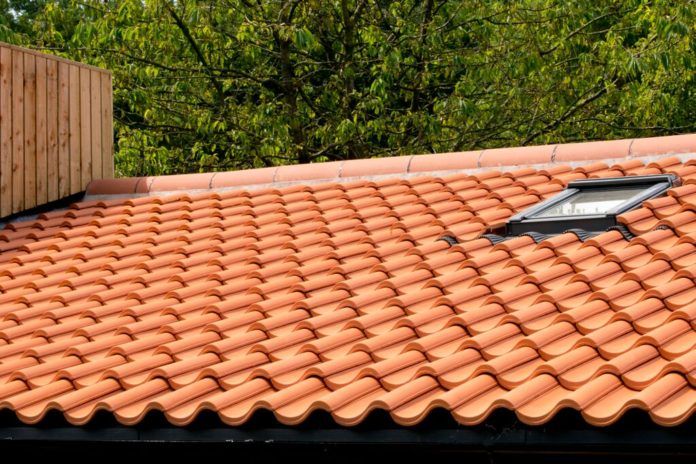The relaxation of planning laws means property owners may look to proceed with extensions to create additional living space rather than having to consider moving to a new house. This provides business opportunities for roofing contractors as demand increases in this area. Stuart Nicholson, director of roof systems at Marley, outlines how best to approach the preparation and specification of tiles for low pitch roofs
When it comes to projects such as single storey extensions, many homeowners often prefer the appeal of a pitched roof, but such schemes need to be carefully designed so that both the aesthetic result and robust weatherproofing issues have been addressed.
As well as trying to match existing tiles, roofing contractors will usually have to create a lower pitch roof for single storey extensions, due to the position of first floor windows, which can be restrictive and has implications for water run-off.
To ensure that the best all-round result is achieved, taking time to assess the following key areas should help everyone navigate the process and result in a practical, durable, and seamless addition to a building’s footprint.
1. While the planning laws have been relaxed, contractors will still need to match the new roof to the roofing material on the original property. As a result, the homeowner will still need to get planning permission if they live in a conservation area.
2. Always consult the manufacturer for alternative options if the tiles to be used do not go down to the minimum pitch needed. Marley has a selection of low pitch tiles to match a traditional clay, slate or concrete aesthetic (see our online pitch checker). This includes the Mendip 12.5, a concrete interlocking tile, which is designed to support extension projects. Its special weatherproofing channels mean it can be used down to a very low 12.5 degree pitch.
3. Contractors should not use a tile below the manufacturer’s recommended minimum pitch, even by half a degree, as it could invalidate the warranty. If installing at a lower pitch, then seek the manufacturer’s advice as a weatherproof sub roof system may be required.
4. When seeking to match with existing clay tiles, there are many low pitch options on the market. For example, Marley’s Melodie clay interlocking tile has a single pantile profile, but can be used on pitches as low as 12.5 degrees, making it particularly suited to extension projects. We also offer two other interlocking clay tiles which can be used down to 17.5 degrees, the Lincoln pantile and Maxima double roman.
5. For low pitch projects, natural slate can be limited by geography because the impact of driving rain must be carefully considered. This means that pitches of 20 degrees can be achieved with natural slate, but it requires increased head laps and therefore more slates, with the consequences of additional weight.
However, there are slate effect tiles that can replicate the slate look at a lower pitch for extension work. For example, the Edgemere range of thin-leading edge concrete slates gives a slate look but is cost competitive and can be used down to pitches of 17.5 degrees without geographical restrictions. They come in a variety of colours and textures, including Riven, to help contractors match the slate aesthetic they need.
6. New extensions still need to comply with Building Regulations and British Standards. Therefore, pitched roofs on extensions should be fixed according to BS 5534. Roofing contractors can get a free fixing specification for projects via the Marley website at: www.marley.co.uk/fixingspec
- Think about using ventilation terminals if mechanical extract or soil vents are to terminate through the roof tiling on low pitch roof slopes. This will ensure minimum pitches of the chosen vents are achieved.
Normal in-line contour vents can usually only be used down to a pitch of 20 degrees, so vents with cowls may be the best alternative as they will share the same minimum pitch as the tile. For low level roof space ventilation, continuous over fascia eaves vent systems can be used.
- A low pitch roof on an extension may have to deal with an increased amount of water coming from a larger roof above, so it needs to be constructed carefully with consideration.




